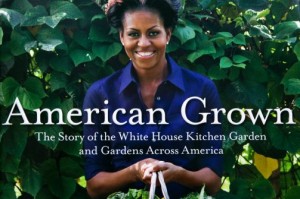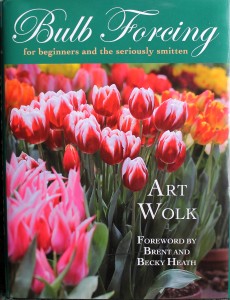Summer Reading
June 19th, 2012
Heading off soon for some well deserved vacation time?
You can’t pull weeds or fertilize the pots while you’re at the beach, but you can read about gardening — whether it’s on a Kindle or old-fashioned paper.
I thought I’d share some new titles I’ve run across that are intriguing. See if any of these four catch your eye:
1.) “American Grown” by Michelle Obama (Crown, $30). This one just came out and is attracting the most attention, mainly because the rookie garden writer happens to be First Lady of United States.
The book is mostly about the White House vegetable garden, which is the first one since Eleanor Roosevelt’s Victory Garden.
Mrs. O. is serious about this and thinks growing our own veggies is a great way to combat the nation’s obesity problem. Her book isn’t really a how-to as much as an inside look at the First Vegetable Garden, which incidentally has no beets since neither she nor the president is a beet fan.
2.) “Vegetable Gardening the Colonial Williamsburg Way” by Wesley Greene (Rodale, $30). I’ve always been fascinated by how people gardened in Colonial days and by Colonial Williamsburg in particular. (We took our kids there most every year when they were little.)
Greene has been a staff gardener at Williamsburg for 30 years and knows all the tips and tricks you’ll see on display in the Colonial Garden on Duke of Gloucester Street.
The book is mostly about the nine most important Colonial crops but also about the tools gardeners used, the season-extending tricks they knew (ones we think are “cutting-edge” today) and curiously, how many ways cut branches are useful in a vegetable garden.
3.) “Bulb Forcing”by Art Wolk (AAB Book Publishing, $32.95). The topic might be narrow, but I really like the fun way Wolk writes. He seldom goes more than two sentences without clowning around somehow.
Wolk is best known for winning gobs of awards in the forced-flower competitions at the Philadelphia Flower Show. Although the main idea here is to share every last secret on how to get bulbs to flower inside in winter, the book also includes enough insights and tips to become a better gardener in general.
4.) “Decoding Gardening Advice” by Jeff Gillman and Meleah Maynard (Timber Press, $16.95). Written by a hort professor and a Master Gardener, this easy-to-read paperback is kind of like a Consumer Reports on garden tips.
It takes a look at 100 of the most common tips tossed around (“Water only in the morning,” “Always stake young trees,” “Change the soil every year in your flower pots”) and looks at the actual research and facts to determine if the advice is good, bad or debatable.
You’ll no doubt be surprised at many of the conclusions.
And seven more new books:
“The Anxious Gardener’s Book of Answers” by Teri Dunn Chace (Timber Press, $12.95). Loads of basic tips in a format of, “The right way to do it” and “If I goofed, can I fix it?”
“Propagation Techniques” by Geoff Hodge and Rosemary Ward (Mitchell Beazley, $19.99). A well-illustrated little hardback on how to make new plants (including cuttings, divisions and grafting) as well as plant-by-plant propagation details.
“Fruit Trees in Small Spaces” by Colby Eierman (Timber Press, $24.95). Ideas on how to cram an orchard full of tree fruits into your backyard using dwarf varieties and pruning techniques.
“Stand Up and Garden” by Mary Moss-Sprague (The Countryman Press, $16.95). Ideal for aging and/or sore-back gardeners, this book focuses on raised beds, trellises and other ways to garden without bending over (much).
“Small-Space Container Gardens” by Fern Richardson (Timber Press, $19.95). What, no yard? That doesn’t mean you can’t use pots and other scrounged or classy containers to grow everything from flowers to fruits on a balcony or porch.
“Beginner’s Illustrated Guide to Gardening” by Katie Elzer-Peters (Cool Springs Press, $21.99). A nice gift for any rookie gardener. It shows all the basics in simple terms and with plenty of instructional photos.
“Grow Your Own for Kids” by Chris Collins and Lia Leendertz (Mitchell Beazley, $14.99). It’s actually more “Grow Your Own WITH Kids” since the point is ideas and tips on how to start a family edible garden.









